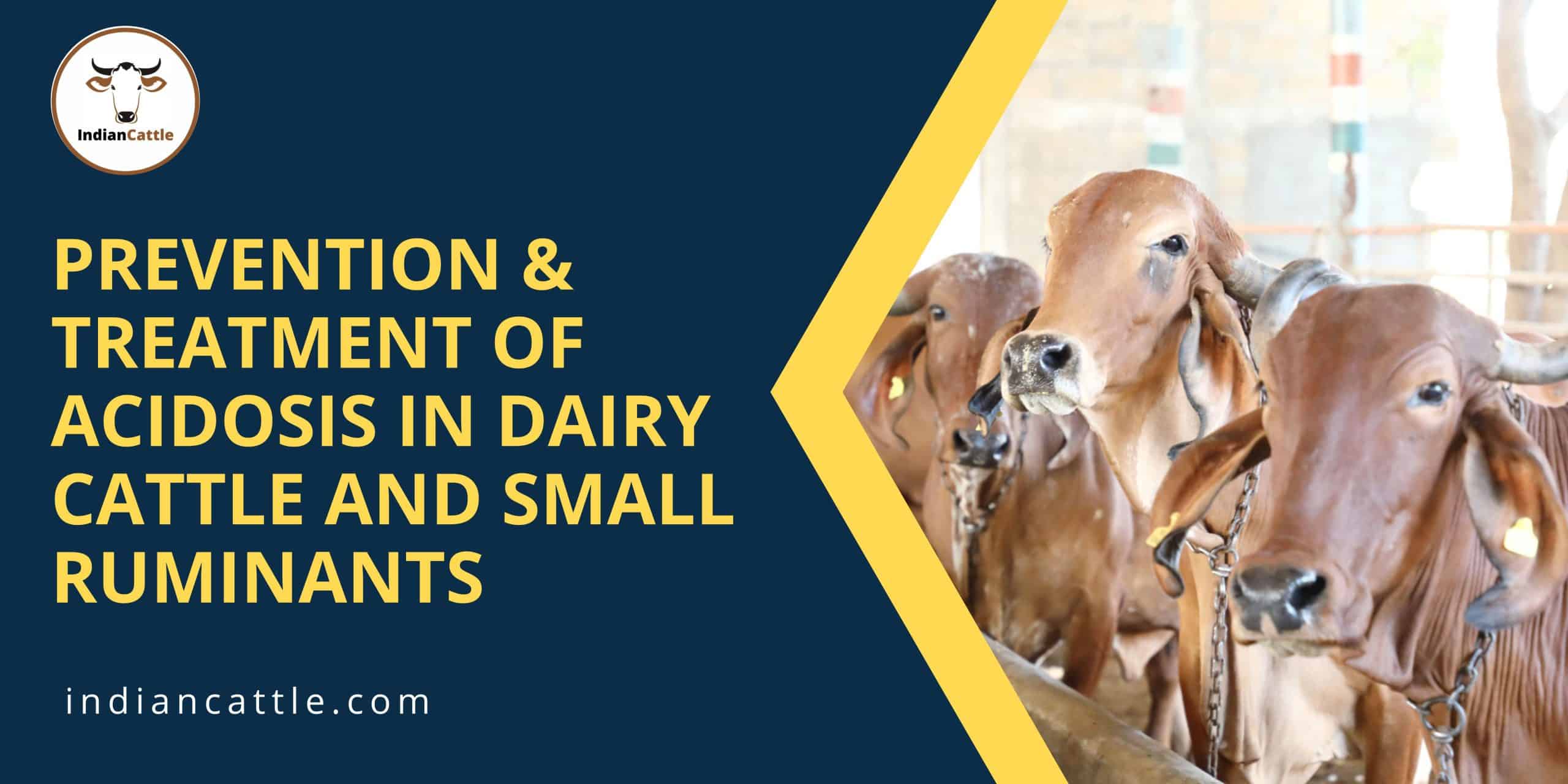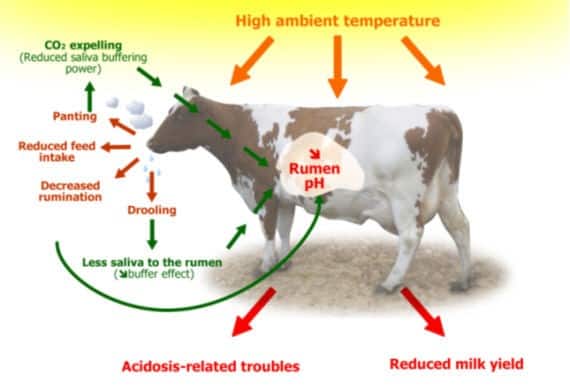
Prevention & Treatment of Acidosis in Dairy Cattle and Small Ruminants
In a normal, healthy rumen, lactic acid production equals lactic acid use. Thus, lactic acid is rarely detectable in a healthy rumen. However, a number of different factors can easily lead to an imbalance in lactic acid metabolism resulting in acute or sub-acute acidosis.
Aetiology
- Diet too high in fermentable carbohydrates
- Too high Concentrate: Forage ratio
- Too fast a switch from high forage to high concentrate
- Too fast a switch from silage to high levels of green chop forage
- The low fiber content in the diet
- A diet composed of very wet and highly fermented feeds
- Too finely chopped forage
- Over mixed TMR resulting in excess particle size reduction
- Mycotoxins
One of the most common causes of acidosis occurs when switching from high fiber to high concentrate diet that is rich in fermentable carbohydrates (starches and sugars). Large amounts of starch and sugar stimulate bacteria that make lactic acid. In this instance, bacteria that normally use lactic acid cannot keep up with production. The amount of acidity in the rumen is measured by pH readings. The optimal rumen pH should be between 6.2 and 6.7, but there is daily fluctuation below this level even in healthy cows. Lactic acid is about ten times a stronger acid than the other rumen acids and causes the rumen pH to decrease. As the rumen pH drops below 6.0, bacteria that digest fiber begin to die and thus, fiber digestion is depressed. Because the end products of fiber digestion are used for milk fat synthesis, a drop in milk fat test is a sure sign of acidosis.
In, addition, the accumulation of acid causes an influx of water from the tissues into the gut and thus a common sign of acidosis is loose faces. If the rumen pH continues to decline and falls below 5.5, good and useful rumen bacteria also begin to die. As lactic acid accumulates, it is absorbed and lowers the pH of the blood. High levels of acid in the gut can also cause ulcers in the rumen resulting in infiltration of bacteria into the blood that can cause liver abscesses. Endo-toxins resulting from high acid production in the rumen also affects blood capillaries in the hoof, causing them to constrict resulting in laminitis. Sub-acute acidosis is also characterized by cycling intake because animals eat less during times of distress, then if the rumen adapts, their appetite returns. If blood pH drops too low, this can result in death of the animal in acute acidosis.

Another common cause of acidosis is having diets too low in effective fiber or too small particle size. When animals don’t chew their cud normally, lack of saliva (that contains a natural buffer) contributes to low rumen ph. In some cases, it is found that some mycotoxins can alter the metabolism of lactic acid causing it to build up and cause acidosis. This may explain why acidosis and laminitis are also commonly observed when mycotoxins are a problem.
Common Symptoms
- Low milk fat test; < 3.0 to 3.3%
- Sore hooves; laminitis
- Cycling feed intake
- Diarrheal
- Liver abscesses
- Low rumen pH (< 5.8) in 30 to 50% of animals tested
- Limited cud chewing
- Sluggish Rumen, Indigestion,
Managing Rumen Acidosis
Fat to protein ratio is a good indicator of rumen acidosis. Fat tests less than 2.7 to 2.8% will more than likely be accompanied by cows with laminitis. In order to prevent acidosis, good management practices are needed to prevent the situations Buffers are useful in keeping rumen pH high, especially in corn silage-based diets. Products that simulate saliva should be preferred rather than sodium carbonate which gives only temporary relief.
Dr. Sanjay K. Latkar
M.V.Sc, PGDJMC, MBA
G P M Veterinary Alembic Pharmaceuticals Ltd Mumbai
Email:- sanjay.latkar@alembic.co.in
